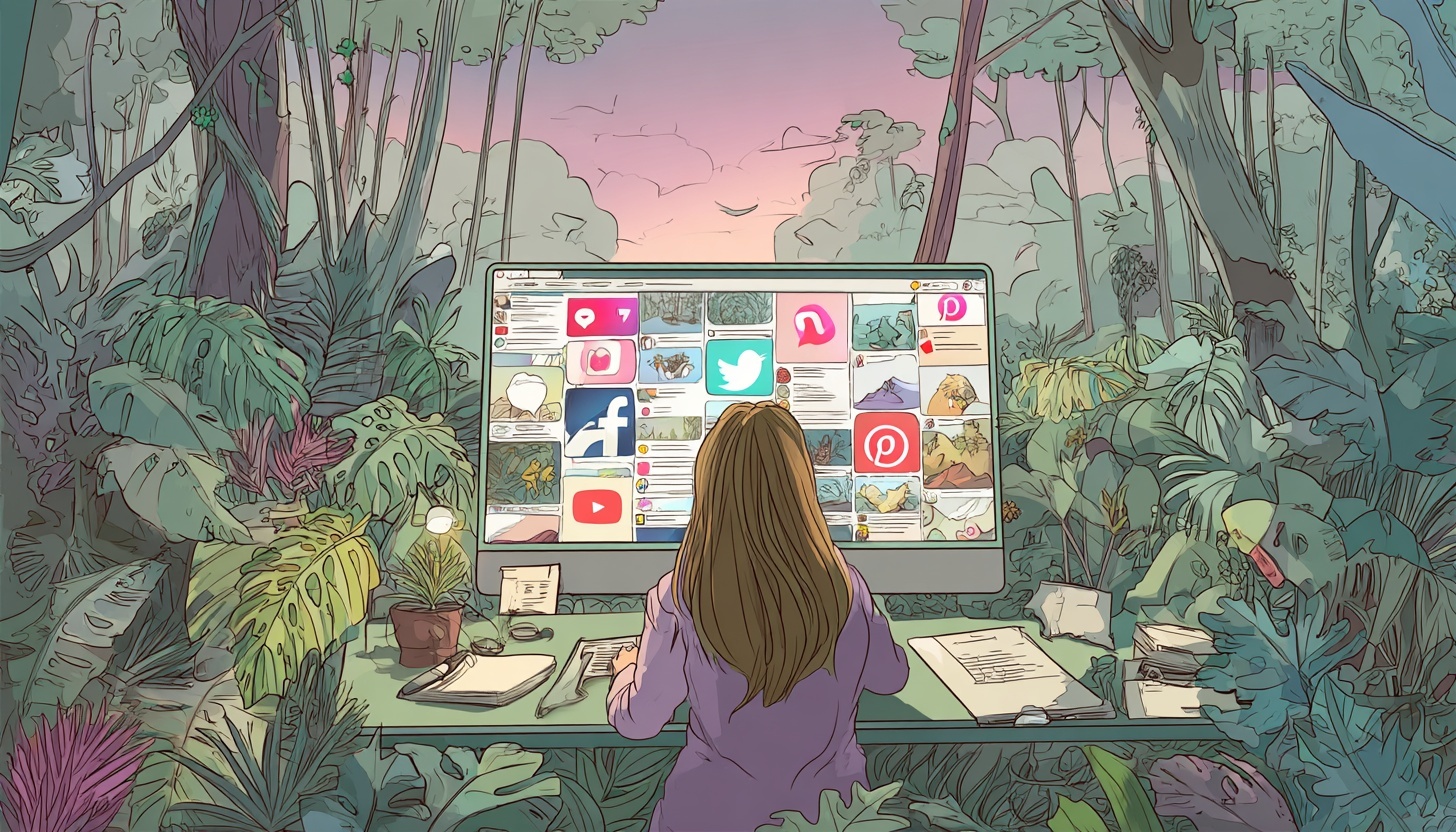So erstellen Sie ein Podcast-Studio: Verbessern Sie Ihre Podcast-Setups
Die Einrichtung eines eigenen Podcast-Studio-Setups ist für die Produktion qualitativ hochwertiger Folgen von entscheidender Bedeutung. Warum? Die besten Podcast-Studios bieten einen besseren Sound und das ist das Geheimnis, um Hörer an sich zu binden. Dadurch ist es auch viel wahrscheinlicher, dass sie wiederkommen, um mehr zu erfahren. Was brauchst du für einen professionellen Podcasting-Raum? Im Folgenden finden Sie alles, was Sie wissen müssen, um Ihre Inhalte zu verbessern und den Erfolg Ihres Podcasts zu steigern. Lass uns eintauchen!
Verwandt: Erfahre hier, wie du einen Podcast startest!

Entwerfen Sie Ihr Podcasting-Studio
Du willst also ein fantastisches Podcast-Studio-Setup. Das ist eine hervorragende Entscheidung. Folgendes müssen Sie beachten:
- Die Größe des Zimmers
- Funktionen zur Geräuschreduzierung
- Beleuchtung und
- Die Kamera, die du benutzt
Jetzt fragst du dich vielleicht, warum wir Beleuchtung und eine Kamera erwähnt haben. Die einfache Tatsache ist, dass sich heutzutage immer mehr Podcaster dafür entscheiden, ihren Podcasts eine Videokomponente beizufügen. Und wenn Sie sicherstellen, dass Ihre Beleuchtung einsatzbereit ist, können Sie mehrere Inhalte in einer Aufnahmesitzung fertigstellen!
Und wenn Sie kein Video daraus erstellen, werden Sie zumindest heller sein, wenn Sie Leute aus der Ferne per Webcam interviewen.
Wählen Sie für eine optimale Aufnahme einen kleineren Raum mit minimalen harten Oberflächen.
Ein kleiner Raum mit Teppichboden und Vorhängen kann beispielsweise dazu beitragen, das Echo zu reduzieren und die Klangqualität zu verbessern. In einem größeren Raum mit Holzböden ist es dagegen wahrscheinlicher, dass Echos und andere Geräuschprobleme auftreten.
Entscheiden Sie sich für deinen Podcast aufnehmen an einem ruhigen Ort, fern von Außengeräuschen, während Sie Ihre Podcast-Einstellung komfortabel halten. Ordne Sitzplätze an, um eine einfache Kommunikation zwischen Gastgebern und Gästen zu ermöglichen. Gleichzeitig solltest du einen angemessenen Abstand zu den Mikrofonen einhalten, um Audioprobleme (z. B. Rückkopplung und hohes Quietschen) zu vermeiden. Stellen Sie die Mikrofone auf stabile Ständer oder Auslegerarme und achten Sie darauf, dass sie für jeden Lautsprecher die richtige Höhe und den richtigen Winkel haben.
Wenn Sie aus der Ferne aufnehmen, stellen Sie sicher, dass Sie Ihre Webcam und Ihre Internetverbindung vor Ihrer Sitzung getestet haben. Und, Profi-Tipp: Machen Sie einen Testlauf, um sicherzustellen, dass alles korrekt funktioniert, bevor Sie mit Ihrem Interview beginnen. Das Letzte, was Sie möchten, ist, Ihrem Gast mitzuteilen, dass das Audio nach einem einstündigen Chat nicht aufgenommen wurde.

Wesentliche Elemente eines Podcasting-Raums
Um ein grundlegendes Podcast-Setup zu erstellen, benötigst du die folgenden Materialien und Ausrüstung:
1. Mikrofon (e) (USB oder XLR) - nein! Nicht der auf deinem Computer! Besorgen Sie sich stattdessen ein professionelles Podcast-Mikrofon.
2. Kopfhörer - vorzugsweise mit geschlossener Rückseite
3. Audio-Interface oder Mixer - zur Not können Sie sich dafür entscheiden, das Gerät nicht zu verwenden und einfach damit weiterzumachen, den Ton nach der Aufnahme zu korrigieren
4. Computer oder Laptop
5. Aufnahme- und Bearbeitungssoftware — kostenlose Optionen wie GarageBand und Audacity eignen sich hervorragend für den Einstieg
6. Mikrofonständer und/oder Schwenkarme
7. Pop-Filter oder Windschutzscheiben
8. Schallschutzmaßnahmen (z. B. Schallschutzplatten — diese sind optional, werden aber empfohlen)
Schallschutz ist eine großartige Idee, wenn Sie das Budget dafür haben. Je weniger Lärm im Raum ist, desto einfacher ist es, in Ihrem Podcast-Studio eine hervorragende Audioqualität zu erzielen. Indem Sie Außengeräusche minimieren und das Raumecho reduzieren, können Sie sicherstellen, dass Ihre Aufnahmen klar und professionell klingen.
Sie können Akustikpaneele oder Bassfallen verwenden. Einige Podcaster entscheiden sich sogar für DIY-Lösungen wie hängende Decken, um Schall zu absorbieren und die allgemeine Audioqualität zu verbessern.
Verwandt: Lesen Sie unseren Beitrag“Die 5 besten Tools zur Erstellung von Podcast-Inhalten, die jeder Podcaster benötigt„
Richten Sie Ihr Podcasting-Studio ein
Schließen Sie bei der Einrichtung Ihres Aufnahmegeräts zunächst Ihr Mikrofon mit den entsprechenden Kabeln (USB oder XLR) an Ihr Audio-Interface oder Ihren Mixer an. Stellen Sie sicher, dass Ihr Mikrofon auf den richtigen Verstärkungspegel eingestellt ist, um Verzerrungen oder Hintergrundgeräusche zu vermeiden. Schließen Sie als Nächstes Ihre Kopfhörer an das Audio-Interface oder den Mixer an, um Ihr Audio in Echtzeit zu überwachen.
Wählen Sie eine Aufnahme- und Bearbeitungssoftware, die Ihren Bedürfnissen und Ihrem Können entspricht.
Zu den kostenpflichtigen beliebten Optionen gehören Adobe Audition und Alitu. Beliebte kostenlose Optionen sind Audacity und GarageBand.
Wofür Sie sich auch entscheiden — machen Sie sich vorab mit den Funktionen und Einstellungen der Software vertraut. Wenn Sie sich die Zeit nehmen, um zu lernen, wie man es benutzt, werden die Aufnahme- und Bearbeitungsprozesse reibungsloser.

Bewährte Methoden für die Verwendung von Podcast-Geräten
Folgen Sie diesen Insider-Tipps und -Tricks, um das Beste aus Ihren Podcasting-Tools herauszuholen:
1. Verwenden Sie immer einen Popfilter oder eine Windschutzscheibe, um Popgeräusche wie schwere P- und B-Geräusche sowie Atemgeräusche zu minimieren.
2. Halten Sie einen gleichmäßigen Abstand zum Mikrofon ein, um einen gleichmäßigen Audiopegel zu gewährleisten. Spielen Sie mit Ihrem Mikrofon, um den optimalen Abstand zu Ihrem Mund zu ermitteln.
3. Verwenden Sie Kopfhörer, um Ihr Audio zu überwachen und Rückkopplungen oder Echos zu vermeiden.
4. Nehmen Sie wann immer möglich in einem verlustfreien Audioformat auf (z. B. WAV). Dies führt in der Regel zu einer besseren Qualität und Flexibilität bei der Nachbearbeitung.
Investieren Sie in hochwertige, langlebige Geräte, die langfristig halten, um Ihr Podcast-Setup kostengünstig zu warten und aufzurüsten. Priorisieren Sie Upgrades, die sich am stärksten auf Ihre Audioqualität auswirken, z. B. Mikrofone und akustische Behandlungen.
Budgetaufschlüsselung — Wie viel kostet ein Podcast-Studio?
Bei der Einrichtung Ihres Podcast-Studios ist es wichtig, Ihr Budget zu berücksichtigen und zu berücksichtigen, was Sie zu verschiedenen Preisen erreichen können. Hier sind ein paar Beispiele:
Anfänger (unter 500$)
Bei diesem Budget können Sie in ein hochwertiges USB-Mikrofon, einfache Kopfhörer und kostenlose Podcast-Aufnahmesoftware wie Audacity oder GarageBand investieren. Dieses Setup eignet sich für Solo-Podcasts oder Remote-Interviews.
Fortgeschrittene (500 bis 1.500$)
Mit einem Mittelklasse-Budget können Sie auf ein XLR-Mikrofon, ein Audio-Interface und bessere Kopfhörer aufrüsten. Sie können auch den Kauf eines Mikrofonarms, eines Popfilters und grundlegender akustischer Behandlungen in Betracht ziehen. Dieses Setup ist ideal für Podcaster, die ihre Audioqualität verbessern und persönliche Interviews aufnehmen möchten.
Fortgeschritten (über 1.500 USD)
Bei diesem Budget können Sie in hochwertige Mikrofone, Mixer und Audio-Interfaces sowie in professionelle akustische Behandlungen und Schalldämmung investieren. Dieses Setup eignet sich für Podcaster, die eine erstklassige Audioqualität benötigen und mehrere persönliche Gäste gleichzeitig aufnehmen möchten.
Akustik 101
Das Verständnis der akustischen Grundprinzipien ist bei der Gestaltung Ihres Podcast-Studios von entscheidender Bedeutung. Schallwellen können von harten Oberflächen reflektiert werden, wodurch Echos und Nachhall entstehen, die die Audioqualität beeinträchtigen. Beachten Sie Folgendes, um diese Probleme zu minimieren:
- Absorption: Verwenden Sie weiche, poröse Materialien wie Akustikplatten, Decken oder Teppiche, um Schallwellen zu absorbieren und Reflexionen zu reduzieren.
- Diffusion: Verwenden Sie unebene Oberflächen wie Bücherregale oder Diffusorpaneele, um Schallwellen zu streuen und stehende Wellen zu verhindern.
- Bassfallen: Platzieren Sie Bassfallen in Ecken, um niederfrequente Geräusche zu absorbieren, die Ihr Audio schlammig oder dröhnen lassen können.
Lösungen für Fernaufzeichnung
Angesichts der wachsenden Beliebtheit von Interviews und Co-Moderationen aus der Ferne ist es unerlässlich, zuverlässige Tools für die Aufnahme von qualitativ hochwertigem Audio aus der Ferne zu haben. Zu den beliebten Optionen gehören:
- Zoomen: Diese Videokonferenzplattform bietet integrierte Aufnahmefunktionen und ermöglicht es Benutzern, separate Audiospuren für jeden Teilnehmer aufzunehmen.
- Zencaster: Diese webbasierte Plattform wurde speziell für Podcaster entwickelt. Es ermöglicht Benutzern, qualitativ hochwertiges Audio aus der Ferne aufzunehmen, ohne auf eine stabile Internetverbindung angewiesen zu sein.
- Google Meet: Für die Aufnahme Ihrer Google Meet-Videos benötigen Sie zwar einen kostenpflichtigen G-Suite-Tarif, dies kann jedoch eine gute Option sein, wenn Sie bereits Google-Produkte verwenden.
Verwandt: Lesen Sie unsere Beiträge über Aufnahme-Apps für Remote-Podcasts.
Tipps zum Kabelmanagement
Für ein professionelles Erscheinungsbild und einen effizienten Arbeitsablauf ist es unerlässlich, dass Ihr Podcast-Studio organisiert und übersichtlich bleibt. Beachten Sie die folgenden Tipps, um Ihre Kabel und Leitungen richtig zu verwalten:
- Verwenden Sie Kabelbinder oder Klettverschlüsse, um die Kabel zu bündeln und zu organisieren.
- Investieren Sie in Kabelmanagementschläuche oder Kabelführungen, um Kabel zu verbergen und für ein saubereres Aussehen zu sorgen.
- Kennzeichnen Sie Ihre Kabel, um ihren Verwendungszweck leicht zu erkennen und Verwirrung bei der Einrichtung oder Fehlerbehebung Ihrer Geräte zu vermeiden.
Einrichtungsoptionen für tragbares Podcast Studio
Für Podcaster, die unterwegs oder an verschiedenen Orten aufnehmen müssen, ist ein tragbares Podcast-Studio-Setup unerlässlich. Ziehe die folgende Ausrüstung in Betracht:
- Kompakte Mikrofone: Suchen Sie nach Mikrofonen, die klein, leicht und robust sind, wie das Shure MV88+ oder das Rode SmartLav+.
- Tragbare Audioschnittstellen: Investieren Sie in ein kompaktes Audio-Interface, das problemlos in Ihre Tasche passt, wie das Focusrite Scarlett Solo oder die PreSonus AudioBox USB 96.
- Geräuschreduzierende Kopfhörer: Wählen Sie Kopfhörer mit hervorragender Geräuschisolierung, wie den Bose QuietComfort 35 II oder den Sony WH-1000XM4, um Hintergrundgeräusche bei Aufnahmen in verschiedenen Umgebungen zu minimieren.
Wartung und Störungsbehebung
Um sicherzustellen, dass Ihre Podcasting-Ausrüstung in einem Top-Zustand bleibt, empfehlen wir die folgenden Wartungstipps:
- Reinigen Sie Ihre Mikrofone regelmäßig mit einem weichen, trockenen Tuch, um Staub und Schmutz zu entfernen.
- Aktualisieren Sie Ihre Software, Firmware und Treiber, um Kompatibilität und optimale Leistung sicherzustellen.
- Bewahren Sie Ihre Ausrüstung ordnungsgemäß in Koffern oder Taschen auf, wenn Sie sie nicht verwenden, um sie vor Beschädigungen zu schützen.
Allgemeine Tipps zur Behebung von Audioproblemen:
- Überprüfen Sie Ihre Kabel und Anschlüsse, um sicherzustellen, dass sie richtig angeschlossen und gesichert sind.
- Passen Sie die Mikrofonverstärkung und die Audio-Interface-Einstellungen an, um Hintergrundgeräusche oder Verzerrungen zu vermeiden.
- Verwenden Sie ein Noise Gate oder eine Software zur Geräuschreduzierung, um unerwünschte Geräusche in Ihren Aufnahmen zu minimieren.
Machen Sie Ihr Setup zukunftssicher
Wenn du in Podcast-Studioausrüstung investierst, solltest du Ausrüstung in Betracht ziehen, die im Laufe der Zeit mit deinem Podcast mitwachsen kann. Dies kann Folgendes beinhalten:
- Modulares Getriebe: Wählen Sie Geräte, die eine einfache Erweiterung oder Anpassung ermöglichen, z. B. Mischpulte mit mehreren Eingangskanälen oder Mikrofone mit austauschbaren Kapseln.
- Erweiterbare Audioschnittstellen: Investieren Sie in ein Audio-Interface mit zusätzlichen Ein- und Ausgabeoptionen, sodass Sie im Zuge der Entwicklung Ihres Podcasts weitere Mikrofone oder Instrumente hinzufügen können.
- Software mit regelmäßigen Updates: Entscheiden Sie sich für Aufnahme- und Bearbeitungssoftware, die regelmäßige Updates und Verbesserungen bietet und die Kompatibilität mit den neuesten Betriebssystemen und Technologien gewährleistet.
Wenn Sie diese Faktoren berücksichtigen und in Geräte investieren, die sich an Ihre sich ändernden Bedürfnisse anpassen können, können Sie Ihr Podcast-Studio-Setup zukunftssicher machen und kostspielige Ersatzgeräte vermeiden.
Verbessern Sie Ihr Podcast-Studio im Laufe der Zeit
Wenn Ihr Podcast wächst und Ihr Budget es zulässt, verbessern Sie schrittweise Ihr Studio-Setup, um die Qualität Ihrer Produktionen zu verbessern. Beheben Sie zunächst alle akustischen Probleme in Ihrem Aufnahmeraum und rüsten Sie dann Ihre Mikrofone und Ihr Audio-Interface auf, um einen klareren, professioneller klingenden Klang zu erzielen.
Achten Sie bei Upgrades auf ein ausgewogenes Verhältnis zwischen Qualität und Wirtschaftlichkeit. Investieren Sie in Geräte, die Ihren Podcast spürbar verbessern, ohne das Budget zu sprengen.
Wir hoffen, dieser Beitrag inspiriert Sie dazu, das perfekte Podcast-Studio für Ihre Bedürfnisse und Ihr Budget zu erstellen.
Und falls du Hilfe bei den Anmerkungen zur Podcast-Sendung und/oder der Erstellung von Werbematerial für deine Folgen benötigst, hoffen wir, dass du Castmagic in Betracht ziehst. Castmagic ist eine All-in-One-Plattform, die Podcaster dabei unterstützt, ihren Prozess der Inhaltserstellung zu optimieren, indem sie Folgen automatisch transkribiert, Sendungsnotizen generiert und KI-gestützte Tools bereitstellt, um ansprechende Beiträge in sozialen Medien, Blogartikel und andere Werbeinhalte zu erstellen. Klicken Sie hier für eine kostenlose Testversion!
Start Repurposing Media with Castmagic
Paste a link from:









Place a link to 1 media file below and get 100+ content assets instantly.
Castmagic transforms your audio and video into blogs, social posts, newsletters, show notes, and more.
Start Repurposing Your Media

Click or drag your audio/video file here
One upload. Generate endless content.
1. Upload Media File: Drag and drop your audio or video file.
2. Get Instant Transcript: 99% accurate, perfectly formatted, speaker-labeled transcripts in 60+ languages.
3. Generate Content: Create publish-ready blogs, social posts, newsletters, and more with AI.

Automate Your Content Workflow with AI










